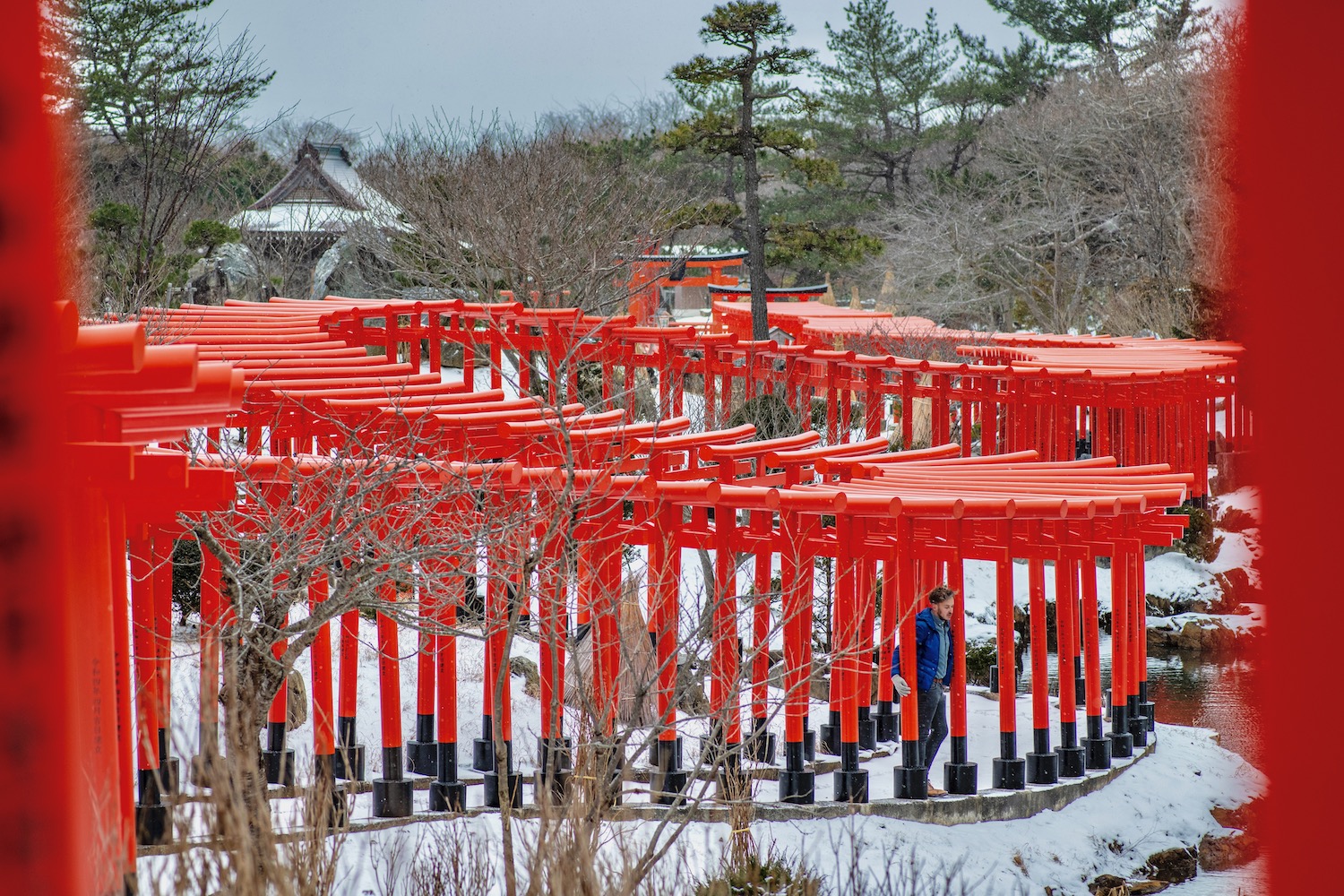The scene replays in my head all the time, but especially when I’m about to uproot myself again. I’m sitting in a bathtub, scalding water rushing over my hands; I’m perfectly content, at least in that moment.
But I’m also at an impasse: Comfort, I remind myself, locked within my smiling stasis, is the enemy of progress. The incident in question happened 15 Januarys ago, but it could’ve been any day in my life.
Which is not to say I was uncomfortable as I waited for the bus to Hirosaki outside Aomori Airport at around 8 PM on the last day of this January. It was warm for the middle of winter, to the extent that I feared the city’s famous snow might be diminished or even melted all together.
Nor it is entirely accurate to characterize my presence there as progress. After all, this airport ba-su noriba is precisely where I’d begun my first post-pandemic trip to Japan, in September 2022. Can I really say I’ve moved forward if I’m literally in the same spot I was in 16 months ago?
In order to keep myself awake onboard—I’d been in transit for exactly 24 hours, and didn’t want to miss my stop—I read Kobo Abe’s seminal The Woman in the Dunes, a book that’s been on my list since I first visited the Tottori Sand Dunes (the landform it’s credited with having made famous) nearly a decade ago.
Hirosaki is far from Tottori in both aesthetic and distance, but it appeared my snowy sojourn would engender in me empathy for the tome’s hapless protagonist.
Without the threat of punishment, The narrator explains, just a few pages in, there is no joy in flight.
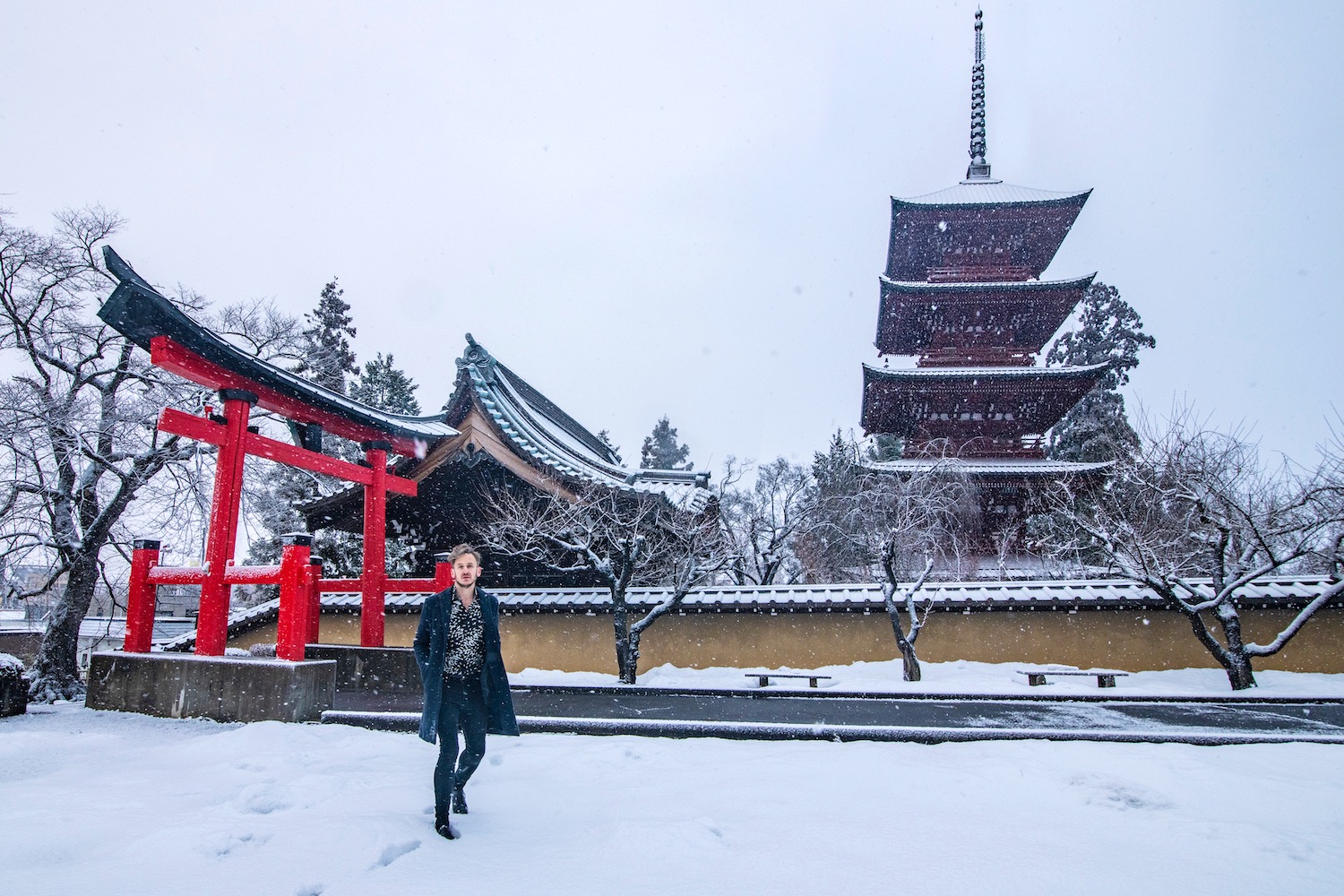
I felt enchanted from the moment emerged my spartan business hotel onto the streets of Hirosaki. The snow was falling at such an intense pace, I had to stop at a nearby Lawson and buy an umbrella.
The elephant-sized pile of it in the konbini‘s parking lot suggested this was a good decision: Left outside long enough, the amount of snow that falls here could bury even men three times my side.
It made me think of The Man (as he’s only ever called) in The Woman: From the moment the titular female trapped him in her abode amid the dunes, he knew nary a moment where the flow of sand didn’t pose a threat to his well-being. It was in his food, in the place where he slept, in the corners of his eyes when he woke up in the morning.
To be sure, while the umbrella protected my face (and, importantly, my hair) as I approached Hirosaki Castle, my stylish (but impractical) faux wool peacoat seemed a magnet for the flakes; probably a centimeter of snow had accumulated on its surface by the time I reached the Sannomaru Otemon gate, which was closed: The tenshu of the Tohoku region’s last original castle did not open until 9 AM.
Unbothered, I walked across the street to the Former Hirosaki City Library (which was also closed, though I only endeavored to see it from the outside) and to Saisho-in.
Its inner sanctum, too, was closed, but as had been the case with the library’s century-old facade, the temple’s magnificent five-story pagoda was in full view from the public portion of the courtyard, where vermillion railing (and a matching torii) framed it perfectly within the wintry scene, snow still falling.
I would like to tell you that I headed back to my hotel at this point simply because I knew nothing would be open for another hour, and because it happened to be nearby. But the reality was that I, like The Man, was overwhelmed; Unlike him, I had the option to do something about it.
I think I may have overestimated my ability, I murmured to myself, as I entered the lobby and immediate began to thaw, no…my desire to endure even a few more days of winter.
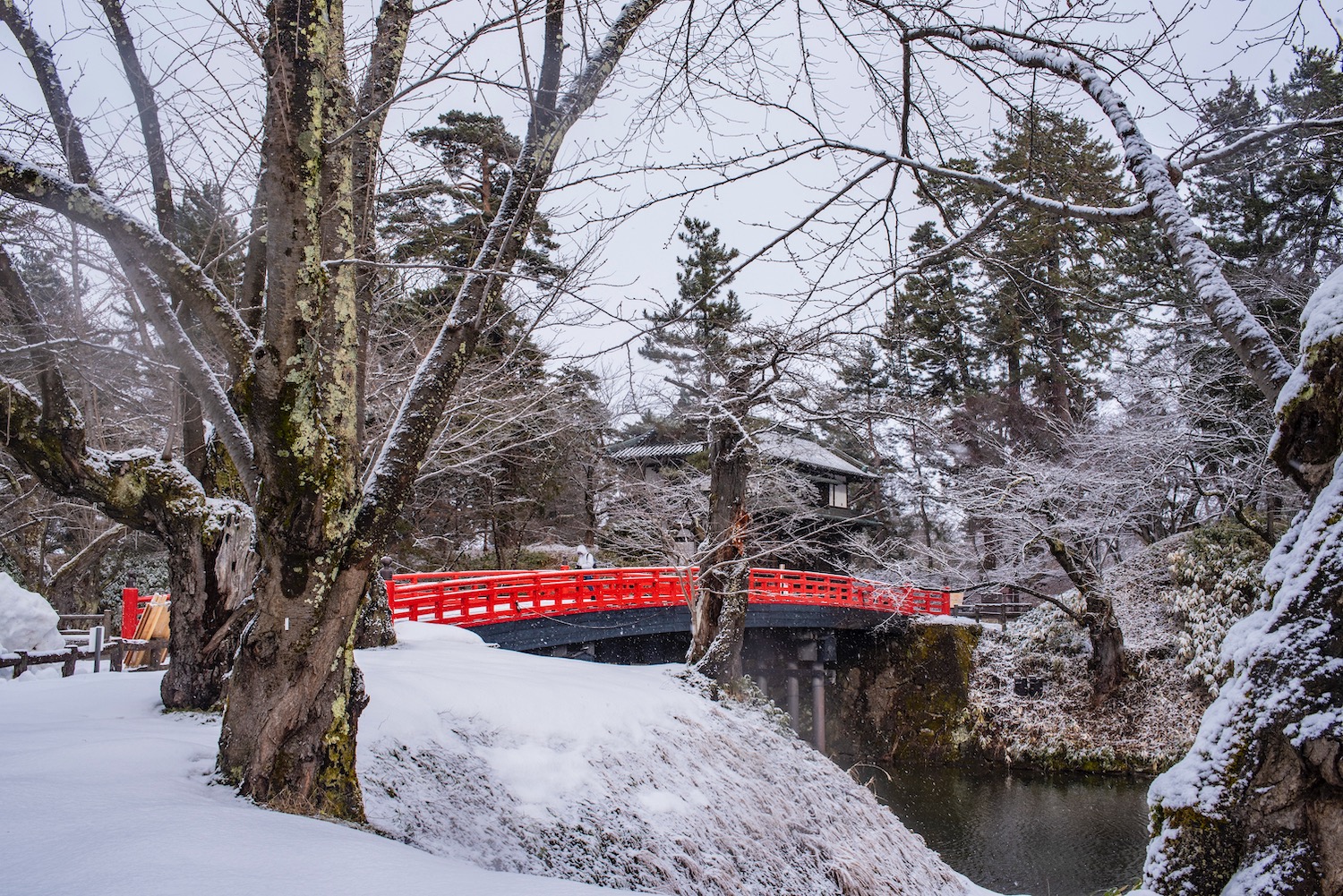
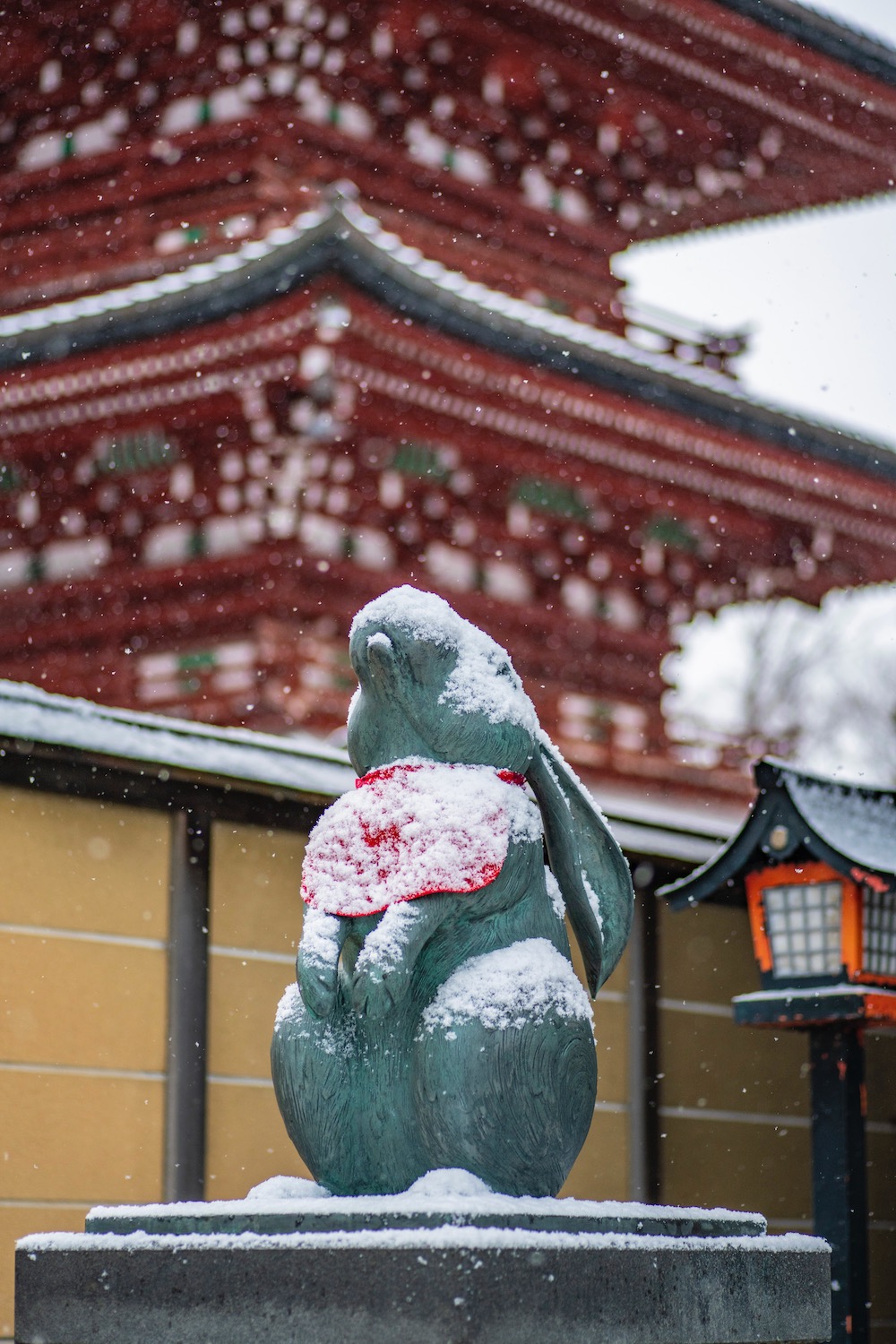
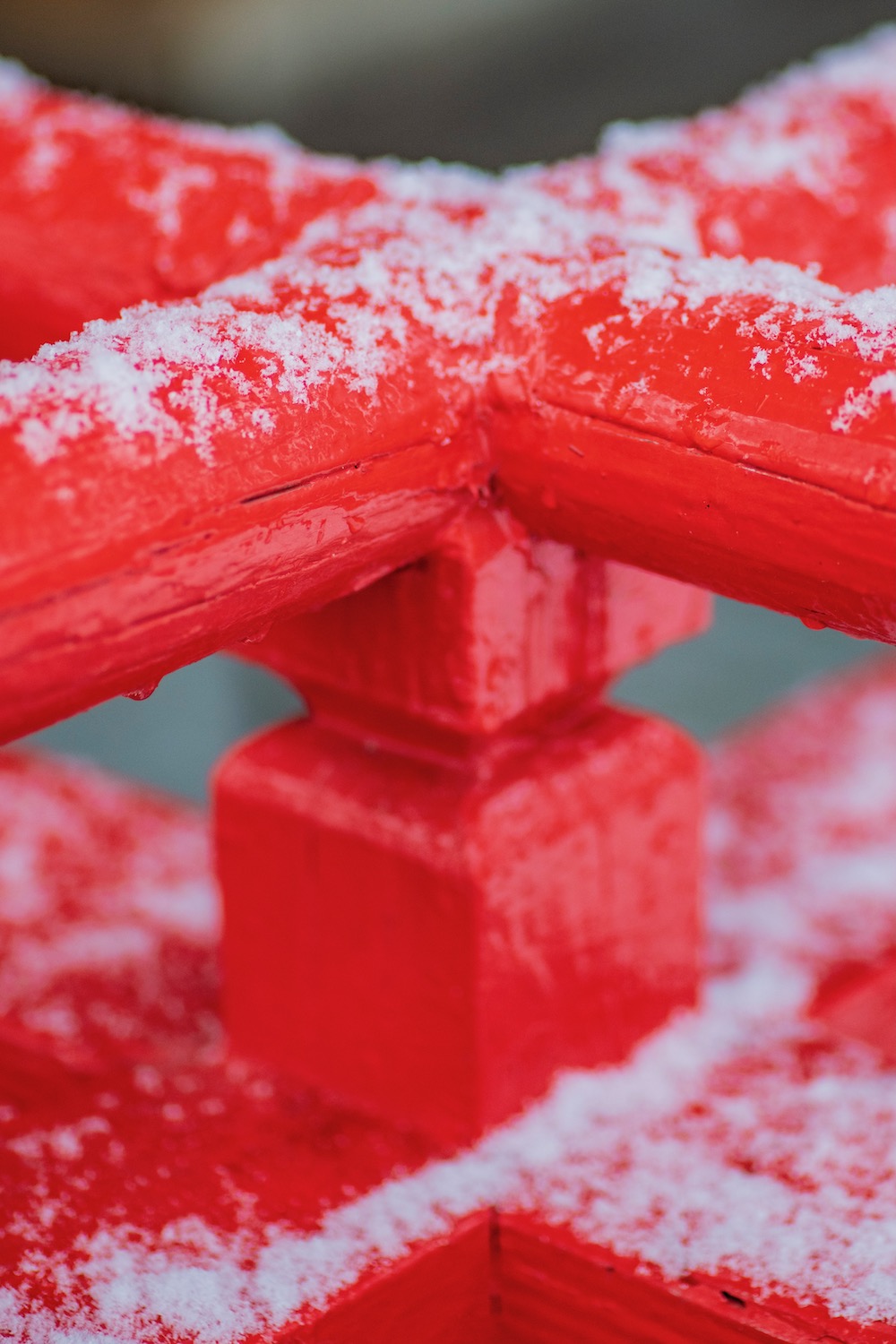
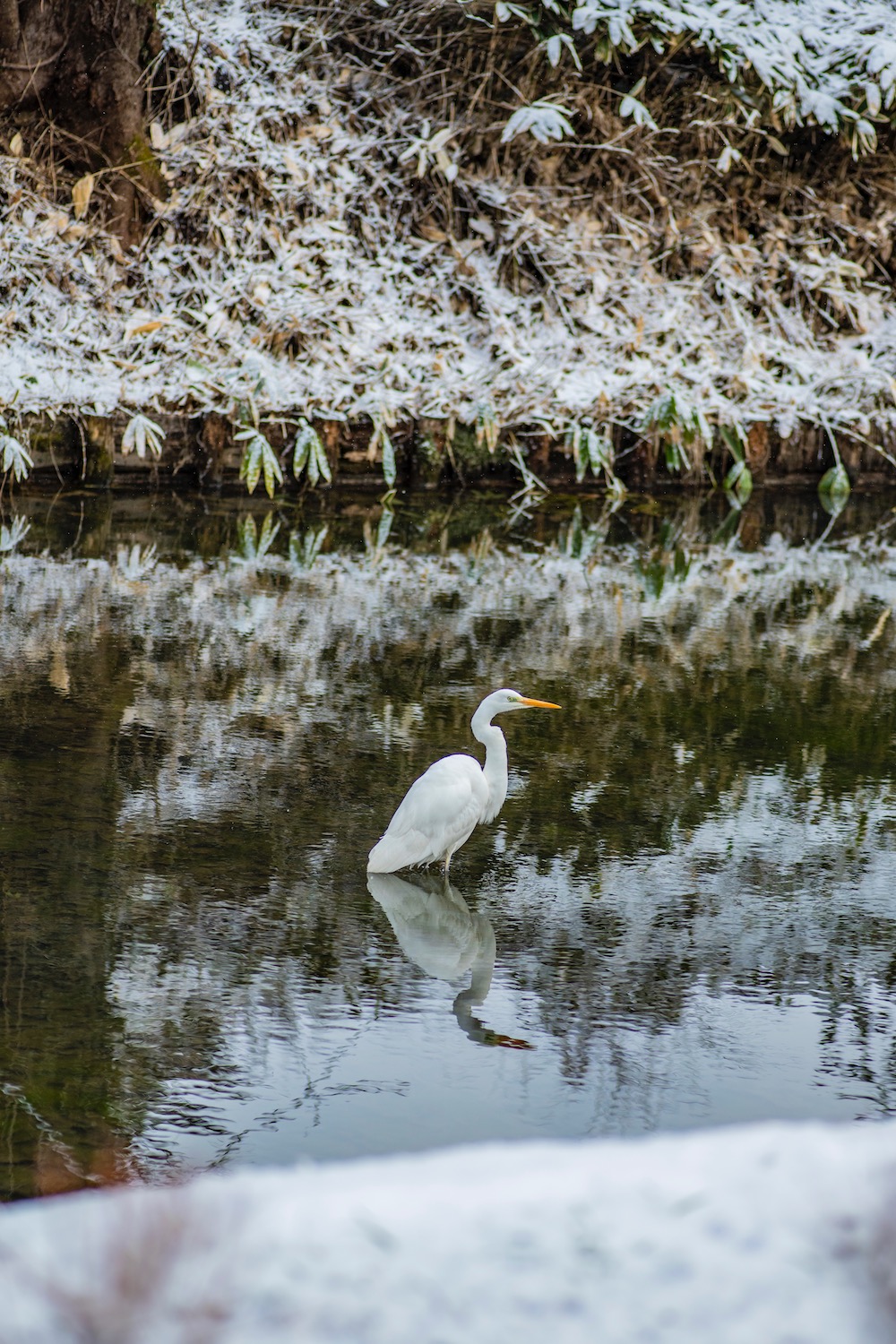
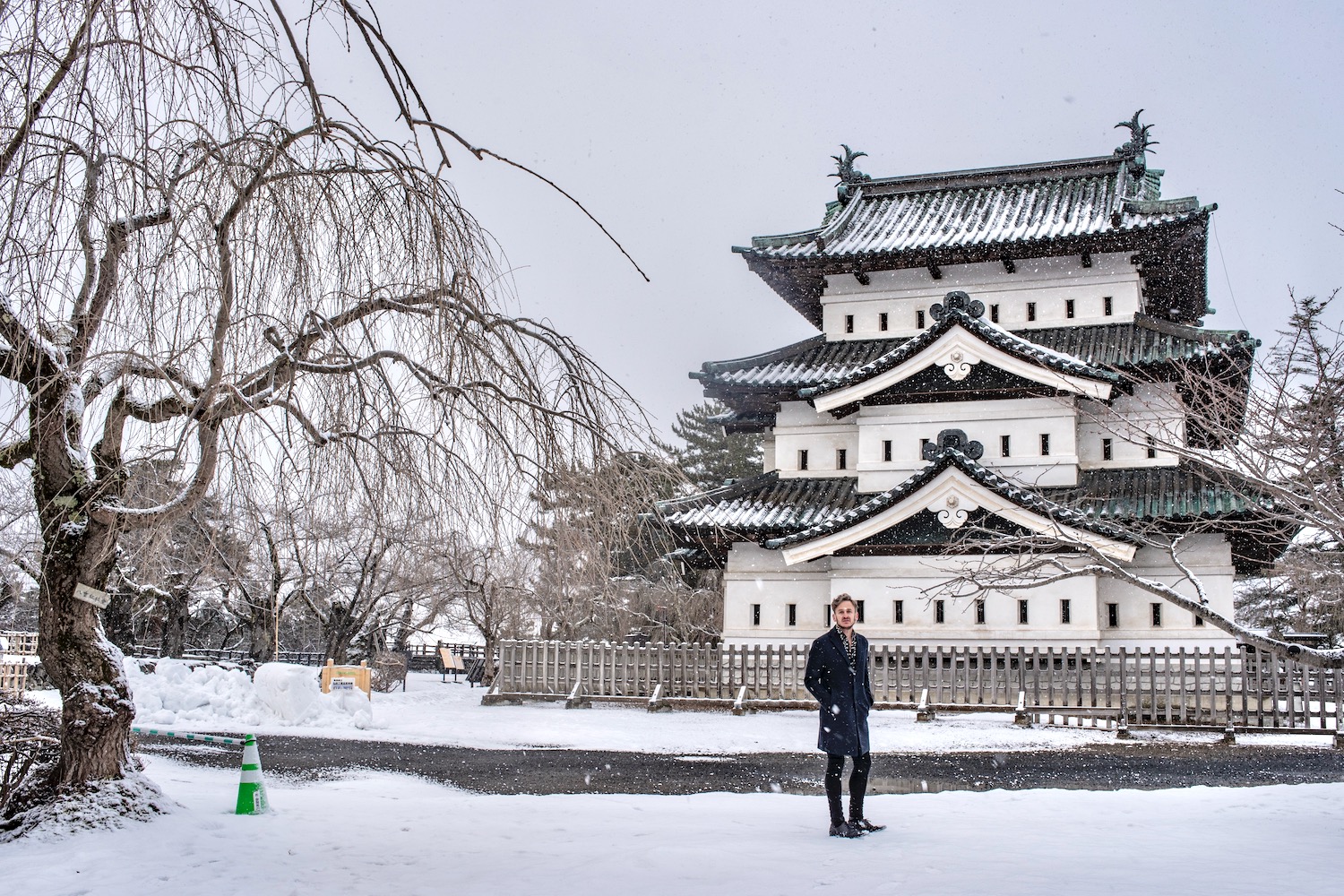
I didn’t end up spending long inside; I simply sprayed my hair (which the wind and snow had tousled into a frizzy mess) and re-organized the contents of my backpack. I ended up arriving to Hirosaki-jo right at 9 AM in fact.
Disappointingly, all the construction equipment that had diminished the beauty of my last trip here, during 2021’s sakura season, was still there. It was worse actually, since the deadness of the trees left it fully exposed. This was to say nothing of the fact that the main tower was still moved from its original location; it was literally impossible to photograph it in its proper context, amid moats and bridges.
Undeterred I crossed the street once again, this time to the Taisho Tea Room. Although I’d planned only a brief photography stop here—I wanted to proceed immediately to the Fujita Memorial Garden next door—the continued relentlessness of the weather made the beef curry with Aomori apples quite literally irresistible.
Yet frigid air seeped into the antique dining room pretty fiercely, so I ate slowly, hungry as I was: The steam rising off my kaa-re rai-su was a precious commodity I didn’t dare waste. A stained glass depicting wisteria (whose kanji was the namesake for the adjacent garden) hung in the window, taunting me.
He wanted to believe that his own lack of movement had stopped all movement in this world, the way a hibernating frog abolishes winter.
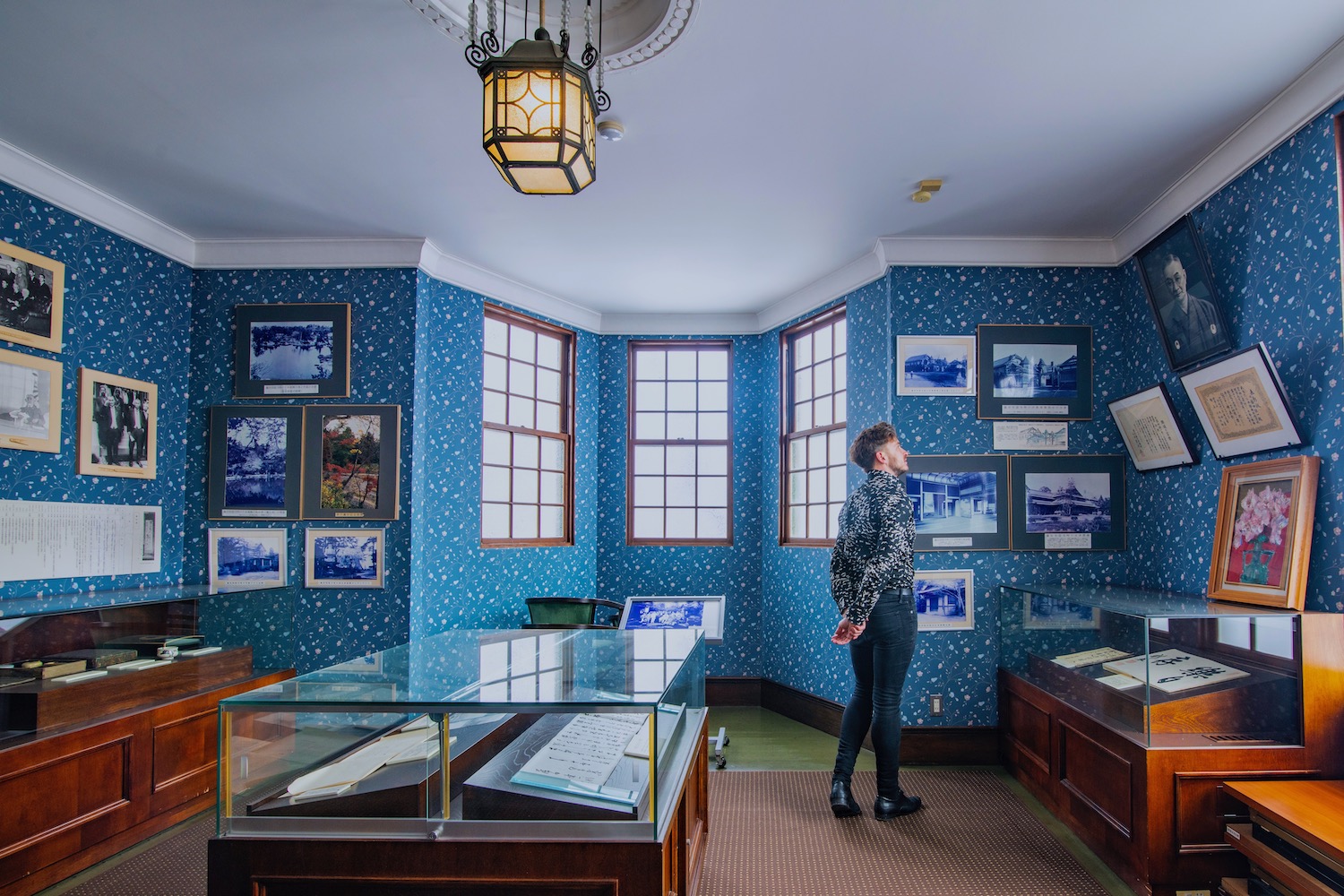
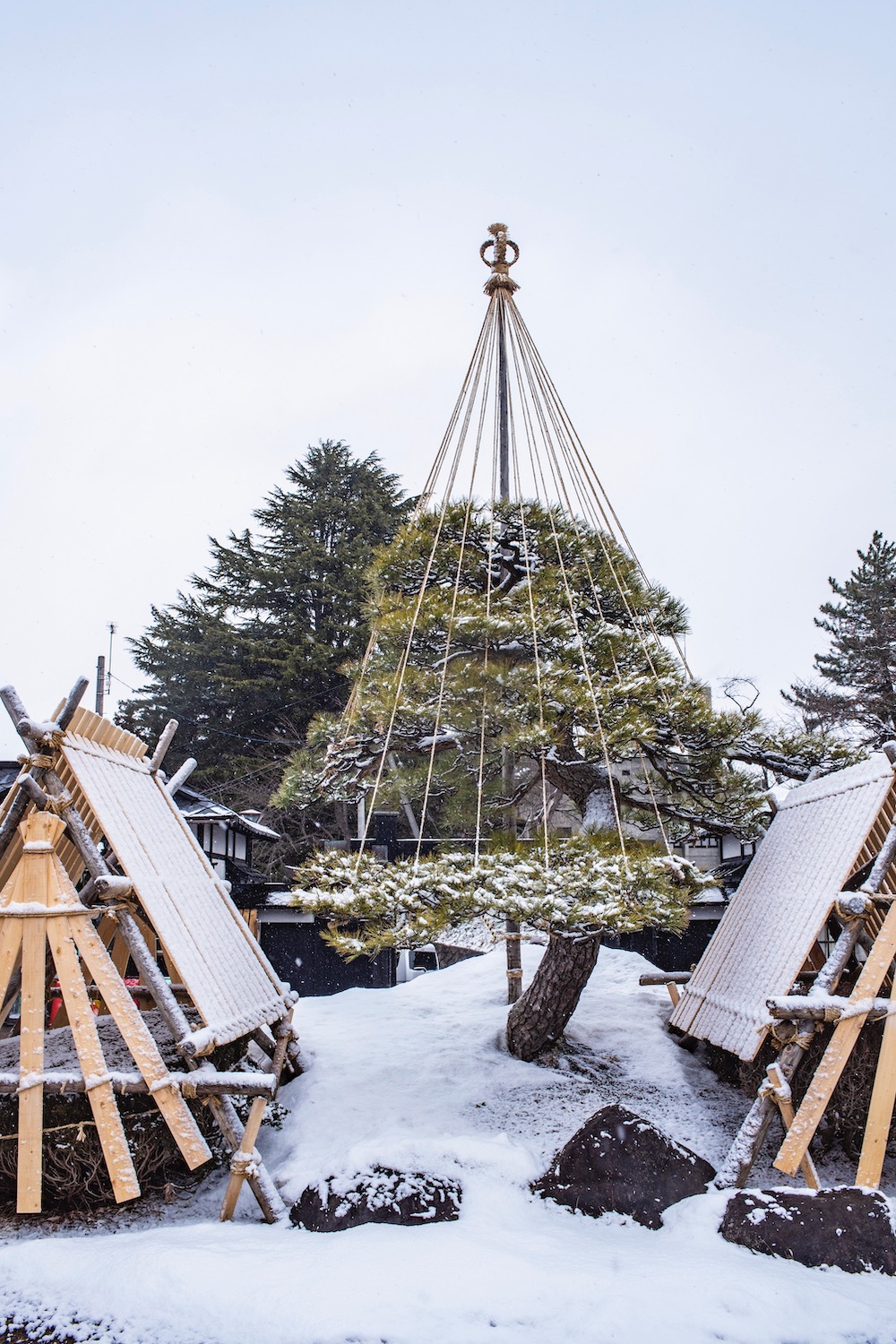

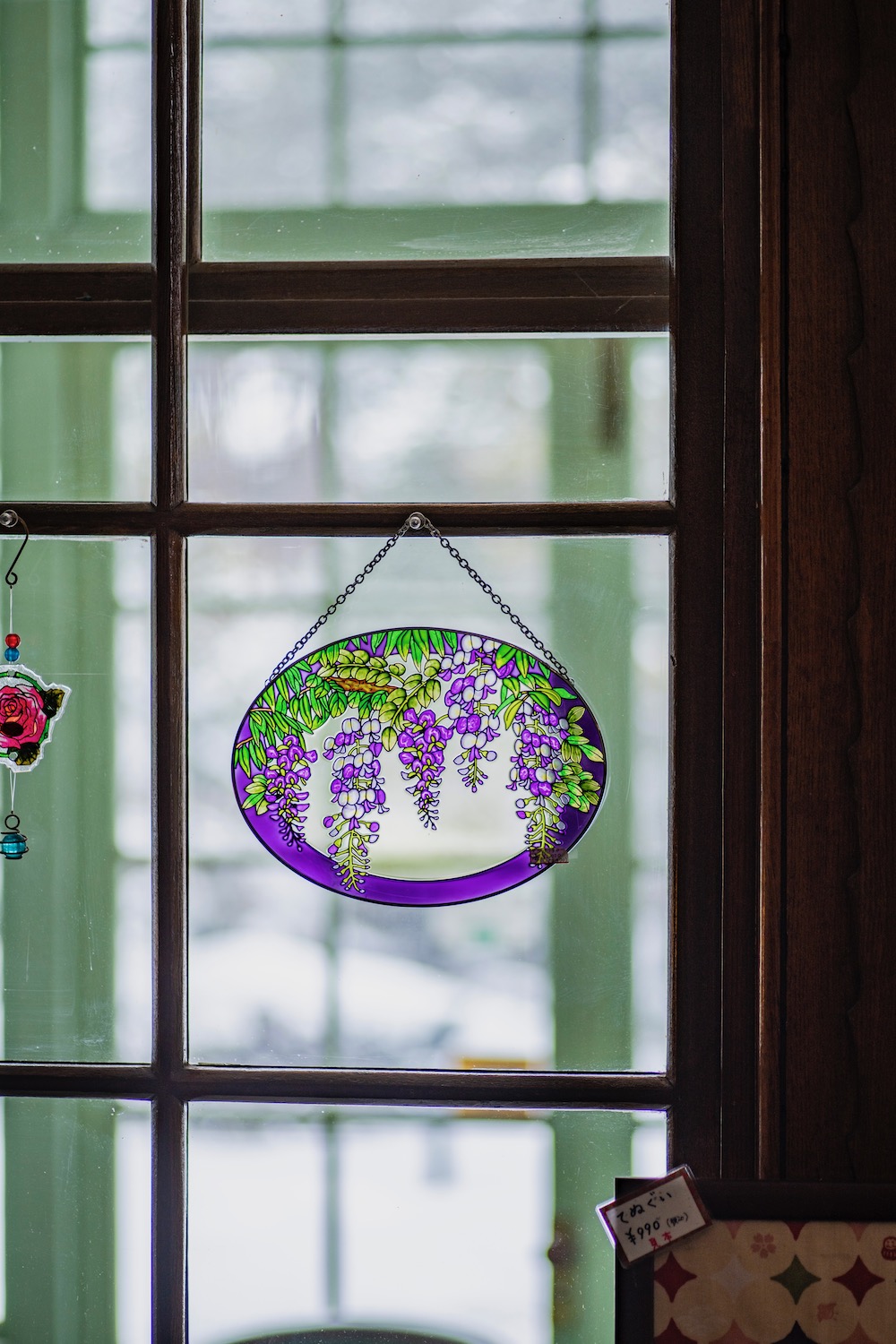
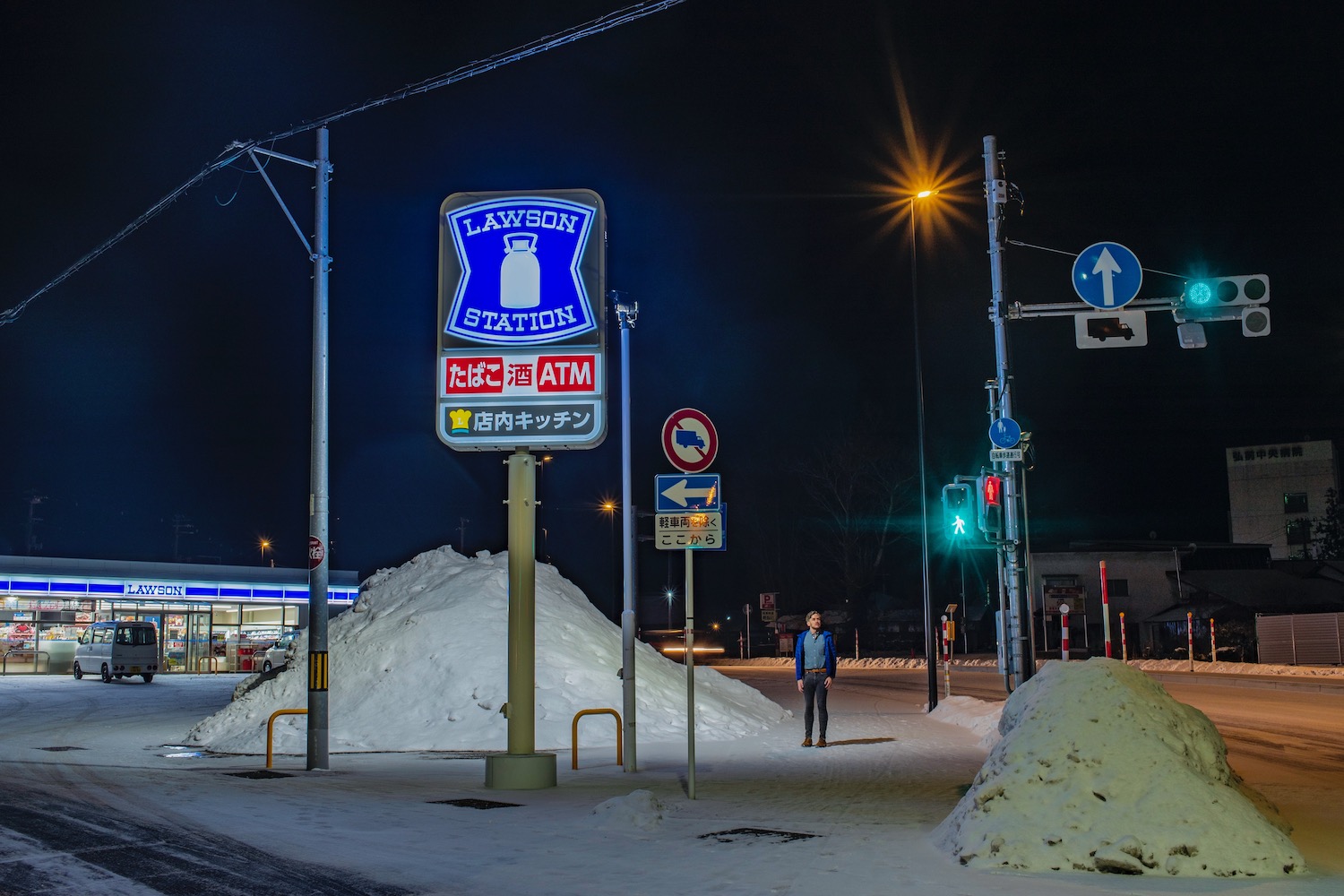
Somewhere between leaving the tea room and arriving in Hirosaki’s underwhelming quasi-Samurai district (where most homes are both not especially old, and also not open to the public), I thought back on my wait for the bus the previous evening, and the 16 months that had led up to it.
On one hand, my travel in Japan during this period had been nothing short of impressive. I’d made eight separate trips, totaling 15 weeks, which is even more than I’d managed when living just down the proverbial road in Bangkok and Taipei between 2017-2019.
On the other hand, I’d spent most of that time taking rescheduled trips, which had either been canceled by Japan’s relentless covid border closures (the epic autumn sojourn I’d originally planned for 2020; the May trip to Hokuriku I’d been unable to take in 2022), or had attempted in 2021 when I was living in the country, but not completed to any level of satisfaction.
It is only now that I am treading a path unencumbered by the ghosts of the past. But even now, I am haunted by the specter of what might’ve been.
Fatigued from all my travel earlier in 2023, I voluntarily canceled a trip in the waning days of the year that would’ve seen me attend the New Year’s bell-ringing at Kyoto’s Chion-in temple for the first time.
Even my presence in Hirosaki right now was a consolation prize—I had originally planned a far more ambitious itinerary. It would have seen me zoom from Ginzan Onsen in Yamagata over to Kawaguchiko near Mt. Fuji and back to Haneda Airport, all during the same number of days I’m booked at my spartan business hotel here.
I tried to read a bit as I laid in my bed during the early afternoon, promising myself both to finish at least 50 more pages, and also not to fall asleep; I failed at both.
It was like trying to build a house in the sea by brushing water aside, read the page in front of me as my eyes fell shut, as if the weight of all the Tottori Sand Dunes was forcing them closed.
Describe the way the squalls move in over the horizon
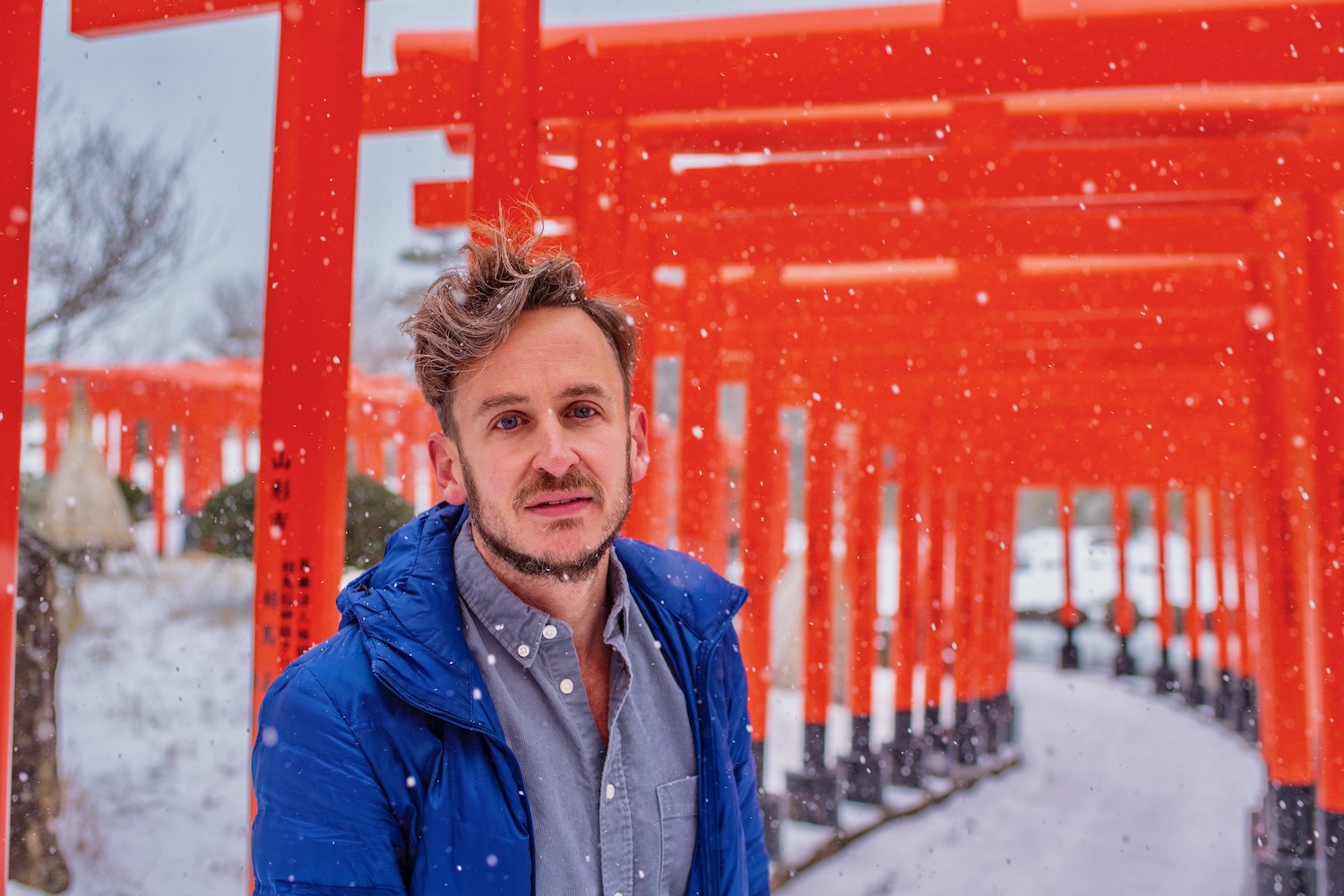
Perhaps comfort, at some point, must win out over progress. Or maybe the two just merge.
I seemed to have happened upon such fusion as I emerged onto the powder-dusted streets of Hirosaki Friday morning, the only human (to my knowledge) out and about at that hour. The temperature was at least a few degrees below freezing, but it felt soothing to my skin, which was hot and parched from the air inside my spartan business hotel.
I tried to inhabit this tranquility later that morning, an hour’s hazardous drive away, as a veritable blizzard blew through the gates of Takayama Inari Shrine as I was walking under them.
Peering through the spaces between the vermillion gates, which were both less sturdy-looking than those at Kyoto’s Fushimi Inari, and much farther apart from one another than they were, I felt exhilarated, and even terrified at turns.
As had been the case back in the city, there were no other humans around, so far as I could tell—would today be the day my fear of being accosted by a bear in rural, northern Japan finally came to pass?
The howling of the wind made it difficult to ascertain whether they was any mammal-born rustling in the scrubby brush all around the shrine; thanks to the intermittent zero-visibility successive squalls of powder brought with them, it was impossible to see farther than the deadened bamboo in the foreground.
For a split-second, I wondered whether I might remain trapped there indefinitely, like The Man ended up being by The Woman: He never ends up escaping, despite a couple of valiant attempts.
Like in Tottori, the sea was so close I could feel the bitter cold blowing off it; the snowbanks around the shrine from all sides might as well well have been dunes.
Love of Home and obligation, the narrator explains about three quarters of the way through the book, seemingly foreshadowing the surrender on which it ends, have meaning only if one stands to lose something by throwing them away.



